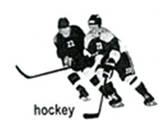
The willful blindness in hockey toward concussions (头部撞击) has dropped. Hockey Canada has followed the lead of USA Hockey in preventing bodychecking (身体拦截) below age 13. A bad head injury of Sidney Crosby, the hockey's greatest star, opened the eyes of hockey people everywhere. This country's children have been facing similar danger at early ages, and Hockey Canada had to deal with a deep worry in the minds of Canadians to make the rule change. The liking for bodychecking from an early age is part of what makes Canadian hockey what it is.
The change in rules should be taken as a chance to draw special attention to skill development in an environment free of danger. It may also control the loss of thousands of young players who don't enjoy that environment.
For years, many Canadian hockey parents and coaches have insisted that bodychecking at early ages is necessary to ensure that players can do it safely at older ages. True or not, there may be a safer way to teach hitting than to make younger players pay a price for it in head injuries. When USA Hockey changed its rules for the 2011-2012 season, it also created bodychecking-education programs that will be mandatory(强制的) for all coaches, including those teaching players in the pre-checking ages. And it began to encourage more "touch" - without real bodychecking - from 9 t0 12. It also made the rules for 13 and up stricter. The USA is trying to show that it's possible to teach hockey protective skills without putting11 and 12-year-olds in greater danger. It's worth the try.
Hockey Canada has taken serious steps to do away with hits on the head. However, it's hard to change a sports culture so connected with who we are as a country. Too often, bodychecking has been used to try to separate a player from his head rather than from the ball. Children were paying a price for this country's love of the game.
There are always changes in Canada's game, and the change in the bodychecking age sends the clearest message yet to coaches and parents that player safety is paramount(至上的) in the game.
小题1:We can tell that the problem of bodychecking in Canada____________.
| A.is controlled strictly |
| B.is taken more seriously now |
| C.is caused by players' carelessness |
| D.is connected with players' interest |
小题2:What does the writer want to tell us in Paragraph 2?
| A.The safe ways of controlling the loss. |
| B.The steps of drawing special attention. |
| C.The possible results of changing the rules. |
| D.The methods of improving the environment. |
小题3:What can we learn from the passage?
A. The USA found a safer way to teach bodychecking.
B. Bodychecking-education programs in the USA are successful.
C. Bodychecking is a good way to value players' skills in the USA.
D. The USA has tried to create an environment of less bodychecking.
小题4:What is probably the best title' for this passage?
| A.Which is more important? |
| B.How do we change the rules? |
| C.Why is hockey a dangerous game? |
| D.When should bodychecking be prevented? |